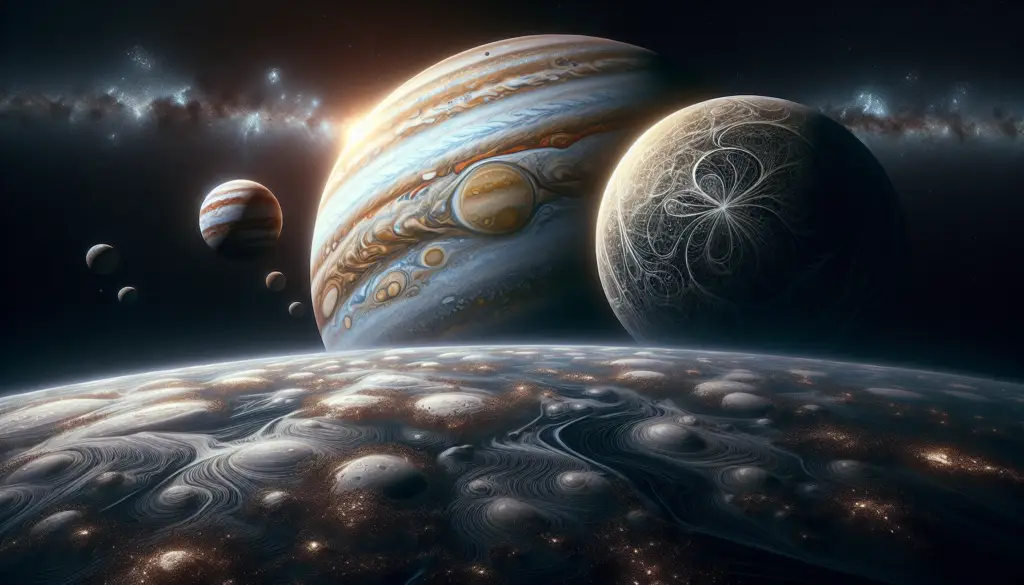Navigating Jupiter: NASA’s Expedition to Our Solar System’s Giant
Jupiter, the largest planet in our solar system, has captivated the imagination of scientists and the public alike for centuries. With its massive size, swirling storms, and enigmatic atmosphere, this gas giant has long been a subject of intense study and exploration. In 2016, NASA’s Juno spacecraft embarked on a groundbreaking mission to unravel the mysteries of this colossal world, providing us with unprecedented insights into the formation and evolution of our solar system.
NASA’s Genesis: The Inception of the Juno Mission
The Juno mission was conceived as a follow-up to NASA’s previous exploration of Jupiter, the Galileo mission, which orbited the planet from 1995 to 2003. While Galileo provided a wealth of information about Jupiter’s atmosphere, magnetosphere, and moons, there were still many unanswered questions about the planet’s core, composition, and the processes that drive its dynamic weather patterns.
Juno was designed to address these gaps in our understanding, with a suite of specialized instruments that would allow it to study Jupiter’s gravitational and magnetic fields, as well as its atmospheric composition and dynamics. The mission’s primary goals were to determine the planet’s internal structure, measure the amount of water in its atmosphere, and investigate the origin and evolution of Jupiter’s powerful magnetic field.
The Daring Journey to Jupiter
Juno’s journey to Jupiter was a remarkable feat of engineering and navigation. Launched in 2011, the spacecraft traveled more than 1.7 billion miles (2.8 billion kilometers) to reach its destination, using a complex series of gravity assists from Earth and the Sun to gain the necessary speed and momentum to enter Jupiter’s orbit.
The final approach to Jupiter was a nerve-wracking experience, as the spacecraft had to withstand the intense radiation and extreme temperatures of the planet’s environment. Juno’s unique design, with its solar panels and instruments shielded by a titanium vault, allowed it to safely navigate this treacherous environment and enter a stable orbit around Jupiter in July 2016.
Unveiling the Mysteries of Jupiter
Since its arrival, Juno has been providing scientists with a wealth of data that has revolutionized our understanding of Jupiter. By studying the planet’s gravitational and magnetic fields, the mission has revealed that Jupiter’s core is much more complex than previously thought, with a possible solid or partially solid inner core surrounded by a deep, turbulent ocean of liquid metallic hydrogen.
Juno’s observations have also shed light on Jupiter’s atmospheric dynamics, including the formation and behavior of its iconic Great Red Spot, a massive storm that has been raging for centuries. The spacecraft’s instruments have detected complex cloud patterns, powerful winds, and unexpected features in the planet’s atmosphere, challenging our existing models and opening up new avenues of research.
Related Article : Historical Events
Exploring Jupiter’s Moons and Beyond
In addition to its primary mission, Juno has also provided valuable data on some of Jupiter’s moons, including Io, Europa, and Ganymede. These icy worlds are of great interest to scientists, as they may harbor subsurface oceans and potentially support extraterrestrial life.
As Juno continues its extended mission, the spacecraft is expected to provide even more insights into the formation and evolution of our solar system. Its findings will not only deepen our understanding of Jupiter but also inform future missions to explore other gas giants, such as Saturn, Uranus, and Neptune, as well as the potential for life beyond Earth.
The Legacy of the Juno Mission
The Juno mission is a testament to the power of human ingenuity and the relentless pursuit of scientific knowledge. By pushing the boundaries of our understanding of the universe, this groundbreaking spacecraft has opened up new avenues of exploration and inspired a new generation of scientists and space enthusiasts.
As we continue to unravel the mysteries of Jupiter and the solar system, the legacy of Juno will endure, guiding us towards a deeper appreciation of the cosmic forces that shape our universe and the incredible potential of human exploration.


